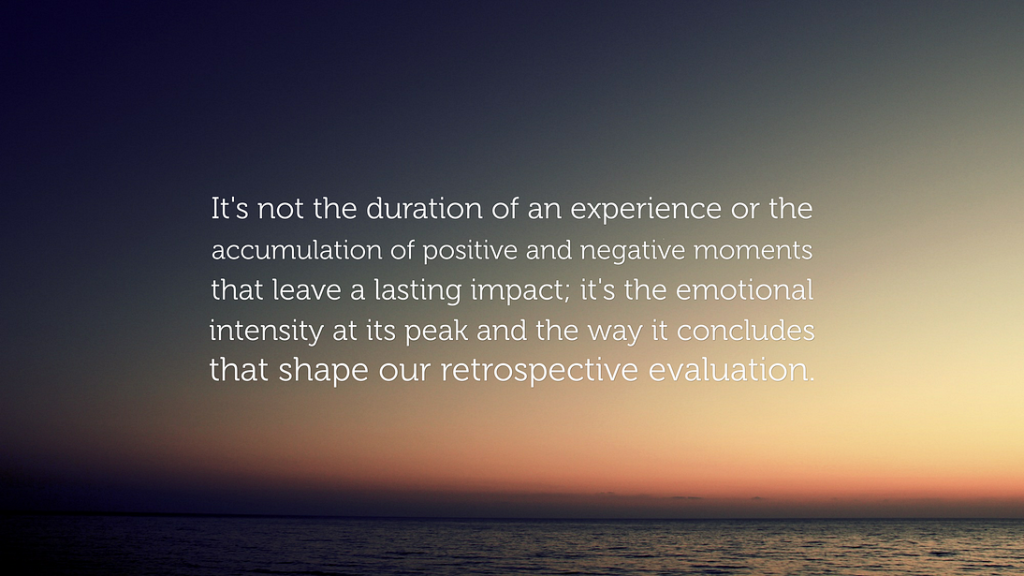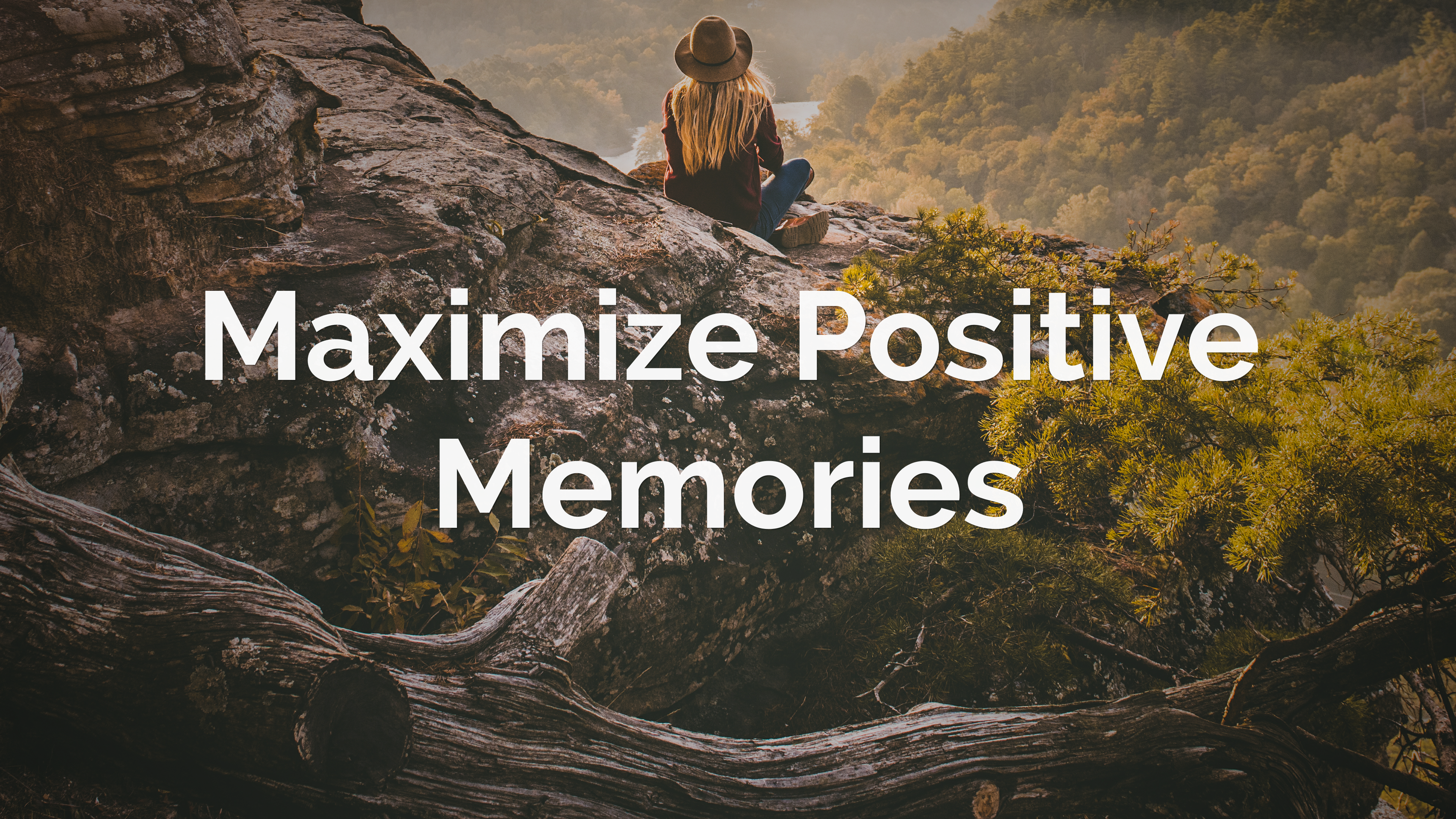Harness the power of the peak-end theory to shape your memories and cultivate a more positive outlook on life.
Ever wonder why certain experiences leave a lasting impact while others fade away? The Peak-End Theory, developed by Nobel laureate Daniel Kahneman, reveals that we judge experiences based on two key moments:
- The Peak – the most intense or memorable moment.
- The End – how the experience concludes.
This means that a brief but powerful moment of joy can overshadow hours of boredom, and a great event can be ruined by a poor ending. But here’s the good news—you can hack this psychological bias to enhance happiness, well-being, and productivity.
The Science Behind the Peak-End Theory
Real-Life Examples and Research:
- Medical Pain Study – Patients who underwent longer procedures but had a less painful ending remembered the experience more favorably than those with shorter but more painful endings.
- Customer Experience – Businesses that ensure a positive peak (great product) and a smooth ending (excellent service) retain customers better.
- Relationships – People often remember relationships based on standout emotional moments and how they ended, rather than the entire journey.
Key takeaway: We don’t remember experiences by their total duration—we remember the highlights and how they finish.
How to Hack the Peak for More Joy
Create Peak Moments
Memorable peaks don’t just happen—you can design them. Here’s how:
- Seek Novelty – Try new experiences (travel, hobbies, challenges).
- Build Emotional Highs – Celebrate wins, create surprises, or share deep moments with others.
- Make Work Exciting – Instead of a monotonous to-do list, break tasks with creative challenges or rewarding milestones.
Example: If you want to enjoy your workout routine more, integrate an energizing song or a fun competition to create a peak moment.
How to End on a High Note
Design Satisfying Conclusions
A great ending can override a mediocre experience. Here’s how to craft a strong finish:
- Plan Joyful Closures – Finish events, trips, and meetings with something uplifting.
- Use Gratitude Rituals – End the day by reflecting on a positive moment or achievement.
- Slow Down & Reflect – Rushing to the next task makes endings forgettable. Savor your wins.
Example: If you had a stressful workday, don’t end it with work emails—take a short walk or enjoy a relaxing activity to shift your mood.
Applying the Peak-End Theory to Your Life
Small Changes, Big Impact
You can integrate these principles into daily life:
- Work: Start meetings with engaging discussions and end with motivation.
- Relationships: Prioritize joyful moments and leave interactions on a good note.
- Personal Growth: End workouts, study sessions, or self-improvement activities with rewarding actions (a favorite song, a mini-break, or a moment of appreciation).
Example: Instead of just completing a project and moving on, pause to acknowledge progress and celebrate success—this ensures a positive memory.

Final Thoughts: Small Tweaks, Big Results
By intentionally designing positive peaks and crafting strong endings, you can reshape how you perceive experiences, boost well-being, and create more happiness in everyday life.
Action Plan:
✔ Identify key experiences in your day.
✔ Find ways to intensify the highs and improve the endings.
✔ Practice gratitude, celebration, and meaningful closure.
Remember: You don’t need to change everything—just tweak the peak and end and watch how your perception of life shifts for the better!
